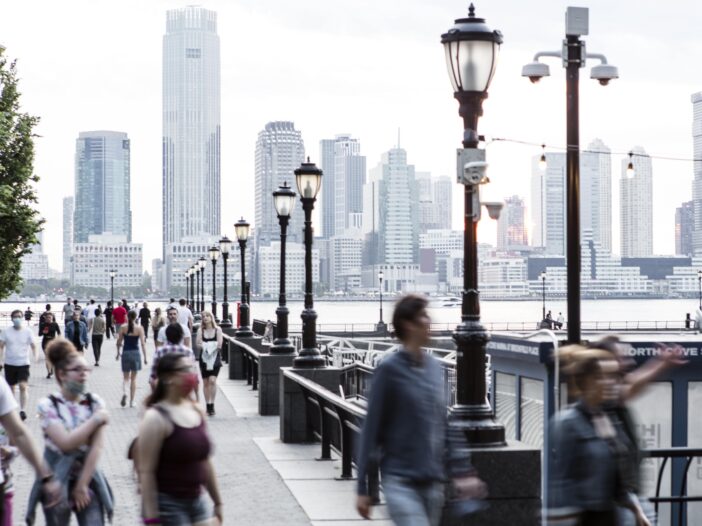
In the article below, our Business Development Director, Adrian Canale, shares his insights on how to strike the right balance between security and community engagement.
London is renowned for its vibrant and dynamic public spaces. The city is home to some of the most exciting and diverse mixed-use environments that blend residential areas, offices, retail outlets, and cultural hotspots. When designing security solutions for these spaces the primary challenge lies in establishing robust security measures that do not detract from the welcoming and open atmosphere these areas provide. The goal is to ensure the security, safety, and well-being of everyone, from residents and commuters to tourists, without imposing an overbearing presence.
Designing effective security solutions for busy public spaces is intricate work. The foundational approach begins with a comprehensive assessment of the assets requiring protection. This encompasses not just the physical property but also the intangible elements like the area’s ambience and the customer’s brand.
The next step often involves a thorough analysis of potential threats. This includes identifying both internal and external risks. Threat identification is an ongoing process, benefitting from strong platforms and highly networked teams who can use data to develop intel for advanced warning of potential threats. It is important to be ahead of the curve in this area. An in-depth understanding of all threats allows for the quantification of their potential impact, guiding the development of responsive and proactive security strategies.
Central to the design of these security solutions are three key pillars: people, procedures, and technology. By harmoniously integrating these pillars, security solutions can be crafted to provide comprehensive protection while maintaining the unique character of the spaces being protected. The goal is to create a robust and multi-layered security solution, capable of adapting to the evolving needs and challenges of these dynamic environments. There are many additional considerations when designing solutions for public spaces.
Public spaces are melting pots of individuals, each with distinct needs and expectations and embracing inclusivity in these spaces has become a cornerstone of modern security solution design. This means designing measures that cater to all, ensuring everyone feels safe and acknowledged.
In this context, security solution designers increasingly call on security personnel to adopt roles that go well beyond traditional duties. They are asked to perform as ambassadors and customer service representatives, trained not only in security and safety procedures but also in skills such as empathy, communication, and cultural sensitivity.
In a city as diverse as London, communication barriers can be a significant challenge. Training and careful recruitment can help bridge the gap and there are many small and simple steps teams can take to improve their accessibility to the public. For example, some of our security teams wear ‘language flags’ on their uniforms. These small, embroidered patches indicate the languages an officer is fluent in, thereby inviting non-English speakers to communicate in their preferred language. This simple but effective tool not only eases communication but also demonstrates a commitment to inclusivity.
The scope of health and safety in modern security has expanded significantly, encompassing advanced medical training, and enhanced rapid response capabilities. This evolution reflects a broader responsibility of security teams, not only in preventing and addressing security incidents but also in responding effectively to health emergencies.
Security personnel are increasingly equipped with medical training that goes beyond basic first aid. This includes specialised courses such as First Person on Scene Intermediate (FPOSi), which provides them with the skills to manage a range of medical conditions and trauma-related injuries.
This advanced medical knowledge enables security teams to act as first responders in emergency situations, able to administer potentially life-saving care while waiting for medical professionals to arrive. This capability is especially crucial in high-traffic public spaces where a range of medical emergencies, from minor injuries to serious health crises, can occur.
Good solution design often incorporates technologies that enhance security operations and provide data for continuous improvements. Although many security companies manage well with traditional systems and methods of working, in an era where data is invaluable, modern technology can have a huge impact on performance. For example, while many companies find paper-based occurrence logs to be adequate, for high footfall public spaces switching to a sophisticated digital system can make a significant difference. This can facilitate the analysis of data to identify trends and make informed decisions about resource allocation, identify areas for additional surveillance or patrols, and continually refine their security strategies. There are so many other areas where technologies can enhance security operations in these spaces, from body-worn cameras offering real-time recording to enhance accountability and safety, to advanced radio systems which ensure seamless communication among team members and even colleagues on other sites.
The art of creating secure yet inviting public spaces lies in the delicate balance between safety and openness. By integrating empathetic, culturally sensitive, and highly trained personnel, advanced technologies, and strategic planning, our industry can achieve the highest standards of security while preserving the vibrancy and inclusivity of our public spaces.

